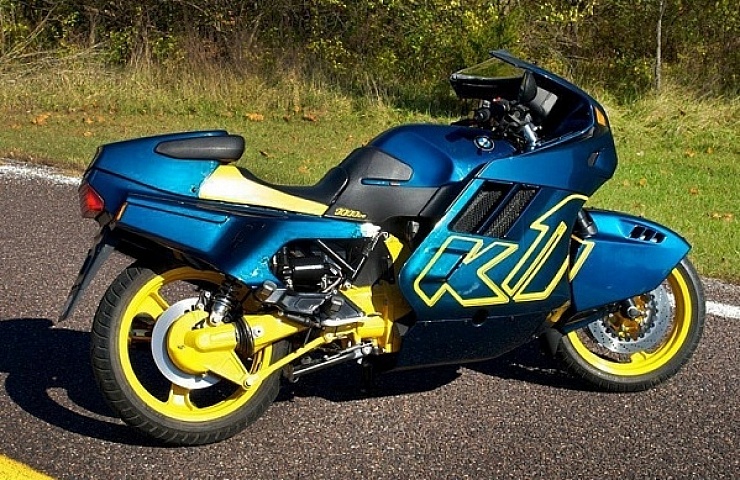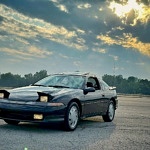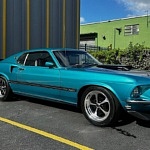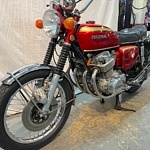Thirty years after its creation, the BMW K1 still makes a bold statement—as evidenced by the 1990 K-1 motorcycle with a sport-touring package listed on eBay Motors.
The model was conceived in the early 1980s as a radical departure for BMW—mostly to quash the perception that the company only made stodgy flat-twin tourers. The liquid cooled K-series bikes were meant to replace the aging air-cooled boxers. It was akin to how Porsche launched the radical liquid-cooled eight-cylinder 928 to replace the venerable air-cooled 911. Both plans failed as the 911 and BMW R series bikes have come to represent the pinnacle of their respective markets.
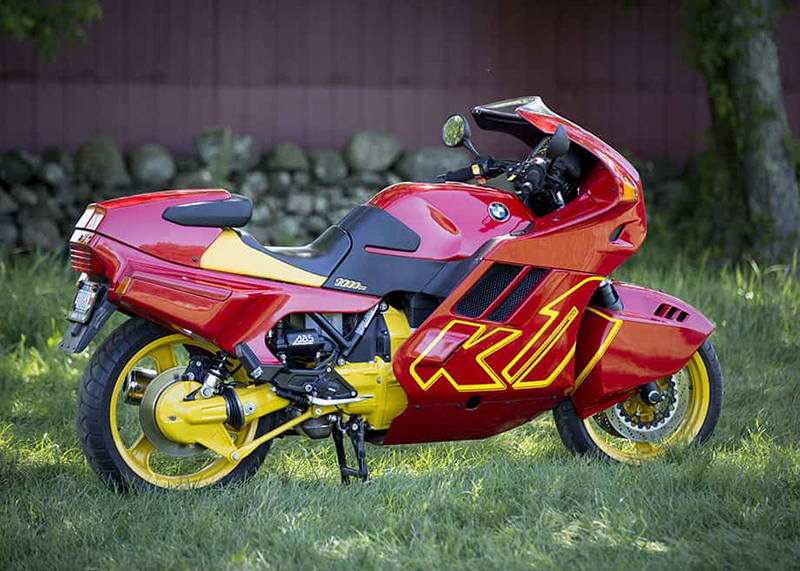
The K1’s Paralever rear drive is an engineering marvel that was borrowed from the off-road G/S model. (Photos of red K1 are courtesy of Ken Richardson.)
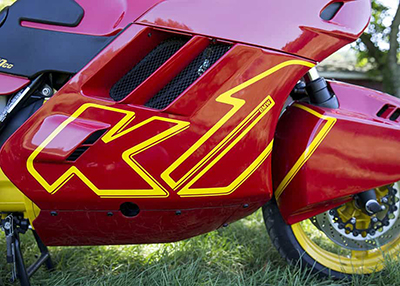
Bold K1 graphics were standard on the earlier models but were toned down for the final-year 1993 model.
Based on the first-generation K-bike platform, the K1 was cloaked in a sleek shell of seven complex interlocking pieces of glass fiber. The slippery aerodynamic sliced through the wind with a low drag coefficient of .34—the lowest of any production motorcycle at the time. The first year models came in German flag livery—schwartz, rot und zenf (black, red, and mustard). Later US series bikes were dressed in blue and charcoal gray, eventually losing the flamboyant K1 billboard lettering.
BMW K1 = High-Speed Touring
In the late 1980s, the K1 was a Buck Rogers futuristic machine. With a claimed top speed of 150 miles per hour, the K1 was not merely a plain-Jane K100 with new clothes. It was lower, longer, and materially faster than a K100.
Remarkably stable at triple-digit speeds, the K1 was designed for high speed. The engineers in Spandau upgraded and changed many components from a pedestrian K100. Some of the K1’s groundbreaking technology took more than a decade to make its way to other motorcycle manufacturers.
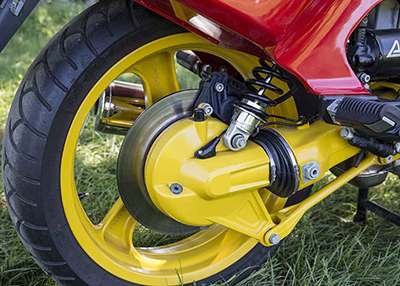
ABS came standard on all US K1s long before many automobiles were equipped with the braking technology.
Features like anti-lock brakes, 16 valves, and an anti-jacking Paralever rear drive shaft were just the beginning. The K1 used a more modern Motronic fuel injection and had higher compression pistons and a lighter crankshaft than the K100. Pushing the envelope of European power regulations of the day, the K1 produced nearly 100 horsepower. It had staggered rims—17-inch wheels up front and 18-inch wheels behind. The Marzocchi forks had slightly less rake than a K100, and massive Brembo brakes completed the upgraded package.
The K1’s Lasting Legacy
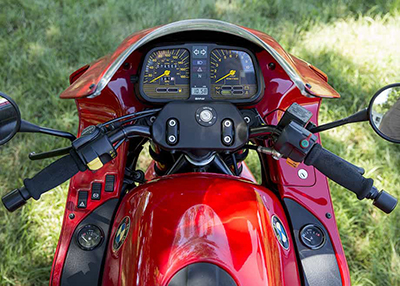
Clear instrumentation utilizes large analog gauges. while digital displays are used for the clock and gear indicator.
The BMW K1 is not without flaws. When fully loaded with fuel, it tips the scales at almost 600 pounds. The fairing design is problematic, with the engine blasting the rider with heat. Another drawback is its length and subsequent turning radius. The K1 needs an expansive 22 feet to turn a half circle. Finally, there is nearly no room for storage—a pair of underwear can barely fit in the lockable fairing storage bins. (BMW did offer a soft luggage option for a hefty $750.)
And then, there was the price. In its first year on the US market in 1990, the K1 listed at $13,000—which represents more than $26,000 in today’s dollar terms. With that sticker price, there were few takers. Fierce sport-bike competition from Japan undermined demand for the K1. Also, its size, weight, and overall mass made it less competitive from a performance standpoint. Ultimately, the K1 became a niche product for well-heeled BMW enthusiasts.
BMW K1 Production ended in 1993 with fewer than 7,000 units produced. Even as the K1 failed in the marketplace, it succeeded in modernizing BMW’s image.
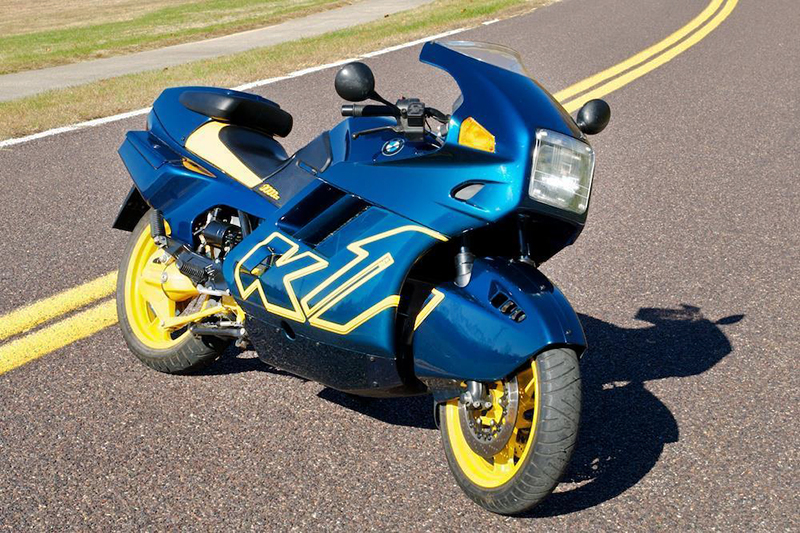
The 1990 BMW K1 looks fast, even standing still.
The K1 might be a love-it-or-hate-it machine, but there’s a lot to love about it. Given its limited run from 1989 and 1993, the K1 is a relatively rare item for a modern production motorcycle. Today good examples that regulary show up on eBay Motors are a relative bargain and can be found for around $10,000. Impeccable examples are still a good deal at slightly higher prices.
See Unbranded Other Motorcycle Wheels, Tires & Tubes for BMW K1 for sale on eBay.

